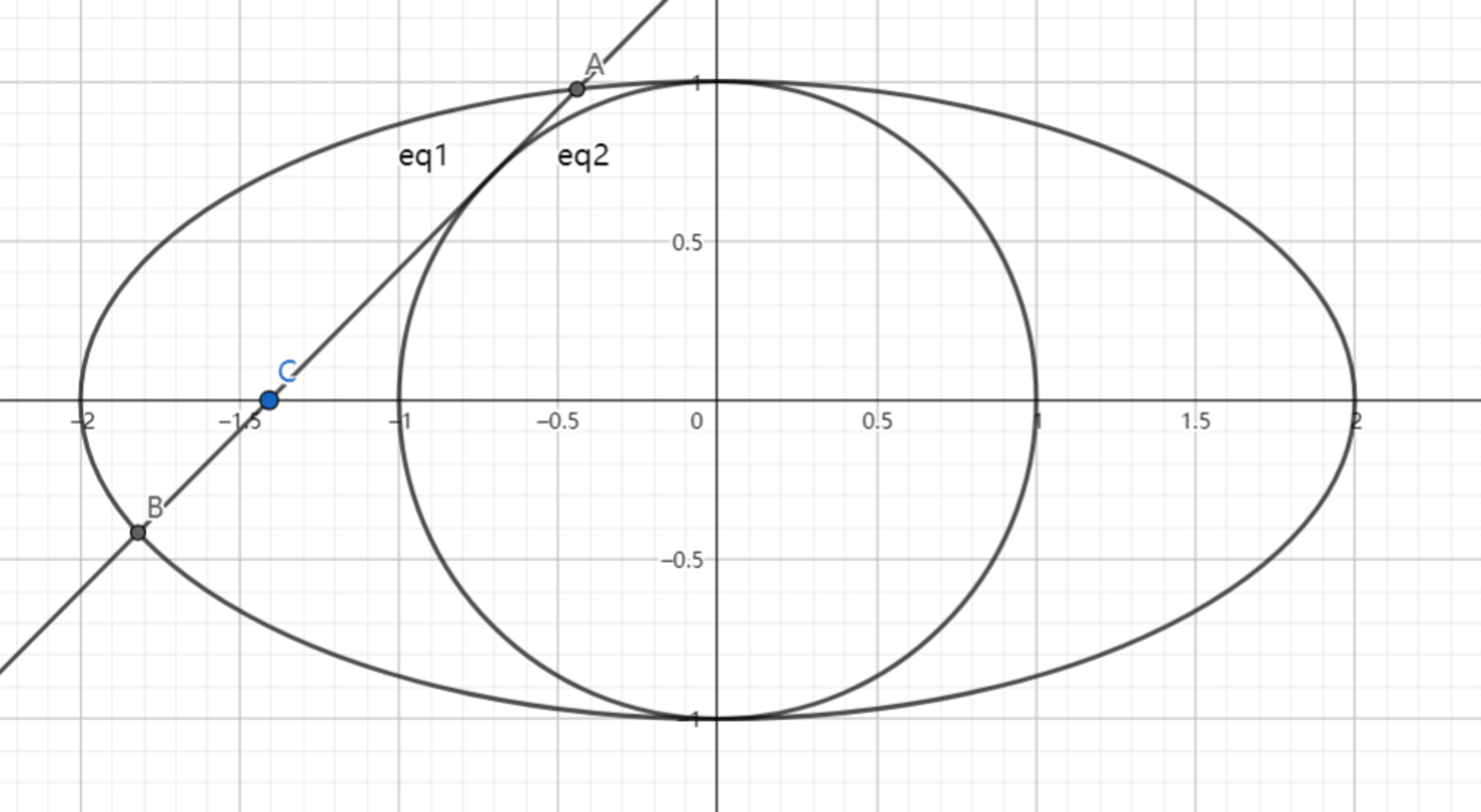SAT1000 - P808

As shown above, the ellipse has equation: 4 x 2 + y 2 = 1 .
If line l passes through point C ( m , 0 ) and is tangent to circle: x 2 + y 2 = 1 .
l intersects with the ellipse at point A , B , then find the maximum value of ∣ A B ∣ .
Let M be the maximum value. Submit ⌊ 1 0 0 0 M ⌋ .
Have a look at my problem set: SAT 1000 problems
The answer is 2000.
This section requires Javascript.
You are seeing this because something didn't load right. We suggest you, (a) try
refreshing the page, (b) enabling javascript if it is disabled on your browser and,
finally, (c)
loading the
non-javascript version of this page
. We're sorry about the hassle.
3 solutions
Just an observation. C is a focus of the ellipse. Define D(-m,0). Nagel point for triangle ABD is (0,0).
Let the tangent point be P with an x -coordinate of p . Since it is on the circle x 2 + y 2 = 1 , its y -coordinate is 1 − p 2 .
The slope between P and the origin is p 1 − p 2 , so the slope perpendicular to that is − 1 − p 2 p . Therefore, the equation of the line A B is y = − 1 − p 2 p ( x − p ) + 1 − p 2 .
The intersection of y = − 1 − p 2 p ( x − p ) + 1 − p 2 and 4 x 2 + y 2 = 1 are at A and B with coordinates that solve to ( 3 p 2 + 1 4 p ± 2 3 p 2 − p 4 , 3 p 2 + 1 1 − p 2 ± 2 3 p 2 ) .
The distance ∣ A B ∣ is then ( 3 p 2 + 1 4 p + 2 3 p 2 − p 4 − 3 p 2 + 1 4 p − 2 3 p 2 − p 4 ) 2 + ( 3 p 2 + 1 1 − p 2 + 2 3 p 2 − 3 p 2 + 1 1 − p 2 − 2 3 p 2 ) 2 = 3 p 2 + 1 4 3 p 2 .
By the AM-GM inequality, the terms 3 p 2 and 1 have the relation 2 3 p 2 + 1 ≥ 3 p 2 ⋅ 1 , which can be rearranged to 2 ≥ 3 p 2 + 1 4 3 p 2 or 2 ≥ ∣ A B ∣ .
Therefore, the maximum value of ∣ A B ∣ is M = 2 , and ⌊ 1 0 0 0 M ⌋ = 2 0 0 0 .
Equation of the tangent to the circle is y = m 2 − 1 m + x .
x -coordinates of A and B are the roots of the equation ( m 2 + 3 ) x 2 + 8 m x + 4 = 0 . Assuming them to be x 1 , x 2 , x 1 − x 2 = m 2 + 3 4 3 ( m 2 − 1 ) .
The difference between the y -coordinates of these points is
y 1 − y 2 = m 2 − 1 x 1 − x 2 = m 2 + 3 4 3
So, ∣ A B ∣ 2 = ( x 1 − x 2 ) 2 + ( y 1 − y 2 ) 2 = m 4 + 6 m 2 + 9 4 8 m 2 ≤ 6 + 2 × 3 4 8 .
Hence the maximum value of ∣ A B ∣ is 2 , and the answer is 2 0 0 0 .